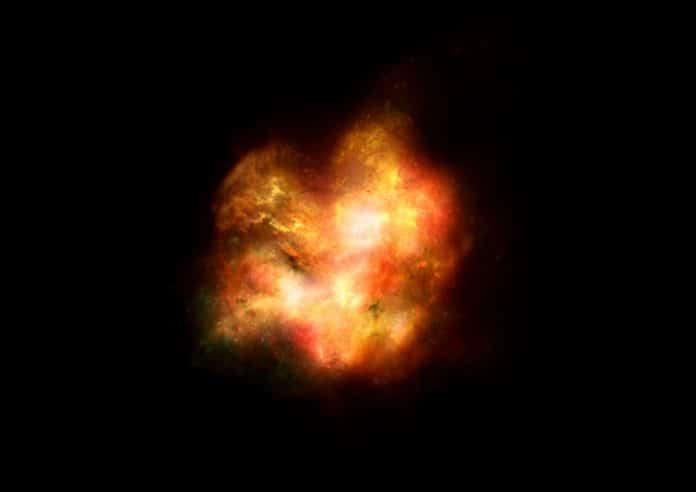Using NASA’s Spitzer Telescope, astronomers have recently found cues on how galaxies lit up the universe. According to their findings, some of the Universe’s earliest galaxies were brighter than expected. This brightness was the result of high amounts of ionizing radiation exerted by the galaxies.
Scientists believe that this study could offer clues to the cause of the Epoch of Reionisation, a major cosmic event that transformed the universe from being mostly opaque to the brilliant starscape seen today.
Astronomers primarily observed some of the galaxies, that are less than 1 billion years after the big bang (or a little more than 13 billion years ago). The observations suggest that in a few specific wavelengths of infrared light, the galaxies are considerably brighter than scientists anticipated.
This is for the first time, astronomers have confirmed this phenomenon for a large sampling of galaxies from this period, demonstrating that these were not exceptional instances of excessive brightness, yet that even normal worlds present around then were much brighter in these wavelengths than cosmic systems we see today.
When the first-star burst life in the universe, still remains a mystery. But according to evidence, about 100 million and 200 million years after the Big Bang, the Universe was filled mostly with neutral hydrogen gas that had perhaps just begun to coalesce into stars, which then began to form the first galaxies. By about 1 billion years after the big bang, the Universe had become a sparkling firmament.
Something else had changed, too: Electrons of the omnipresent neutral hydrogen gas had been stripped away in a process known as ionisation. The Epoch of Reionisation — the changeover from a universe full of neutral hydrogen to one filled with ionized hydrogen — is well documented.
Before this Universe-wide transformation, long-wavelength forms of light, such as radio waves and visible light, traversed the universe more or less unencumbered. But shorter wavelengths of light — including ultraviolet light, X-rays and gamma rays — were stopped short by neutral hydrogen atoms. These collisions would strip the neutral hydrogen atoms of their electrons, ionising them.
To focus back in time just before the Epoch of Reionisation finished, scientists looked closely towards two regions of the sky for more than 200 hours each, allowing the space telescope to collect light that had traveled for more than 13 billion years to reach us.
As some of the longest science observations ever carried out by Spitzer, they were part of an observing campaign called GREATS, short for GOODS Re-ionization Era wide-Area Treasury from Spitzer. GOODS (itself an acronym: Great Observatories Origins Deep Survey) is another campaign that performed the first observations of some GREATS targets. The study also used archival data from the NASA / ESA Hubble Space Telescope.
Utilizing these ultra-deep observations, the astronomers observed 135 distant galaxies and found that they were all especially splendid in two explicit wavelengths of infrared light created by ionizing radiation collaborating with hydrogen and oxygen gases within the galaxies. This infers these galaxies were dominated by young, huge stars made generally out of hydrogen and helium. They contain little measures of heavy elements (like nitrogen, carbon, and oxygen) contrasted with stars found in normal present-day systems.
These stars were not the principal stars to frame in the Universe (those would have been made out of hydrogen and helium just) yet were still individuals from an all-around early age of stars. The Epoch of Reionisation wasn’t an immediate event, they do provide new outcomes are insufficient to close the book on this cosmic event, they do give new insights regarding how the Universe advanced right now and how the transition played out.
Michael Werner, Spitzer’s project scientist at NASA’s Jet Propulsion Laboratory in Pasadena, California said, “We did not expect that Spitzer, with a mirror no larger than a Hula-Hoop, would be capable of seeing galaxies so close to the dawn of time. But nature is full of surprises, and the unexpected brightness of these early galaxies, together with Spitzer’s superb performance, puts them within range of our small but powerful observatory.”
Pascal Oesch, an assistant professor at the University of Geneva and a co-author on the study said, “These results by Spitzer are certainly another step in solving the mystery of cosmic reionization. We now know that the physical conditions in these early galaxies were very different than in typical galaxies today. It will be the job of the James Webb Space Telescope to work out the detailed reasons why.”
The new work appears in a paper in Monthly Notices of the Royal Astronomical Society.
